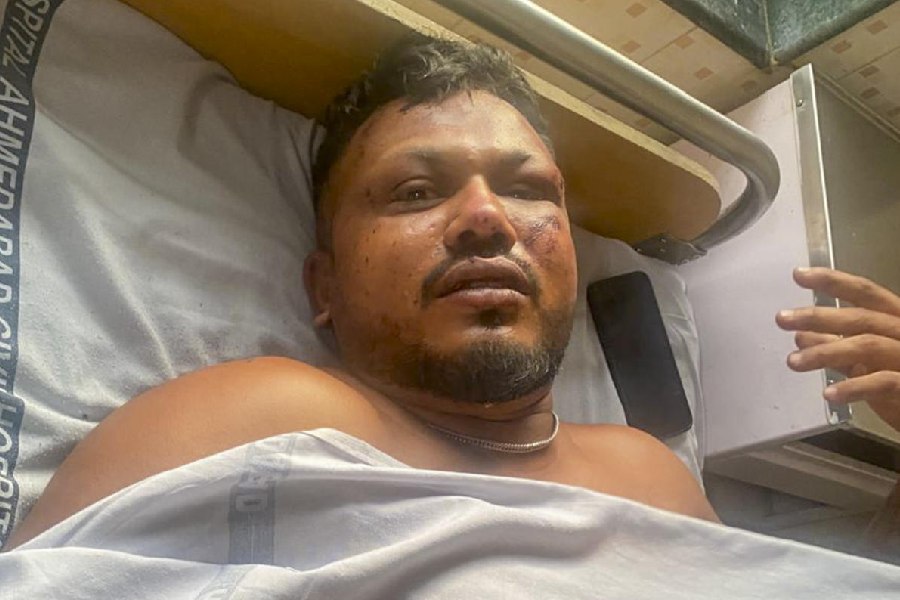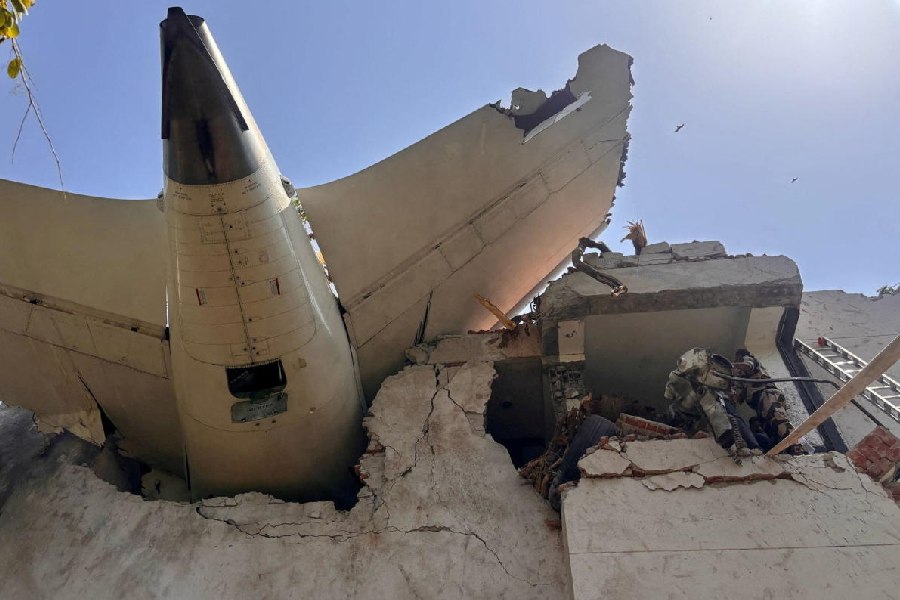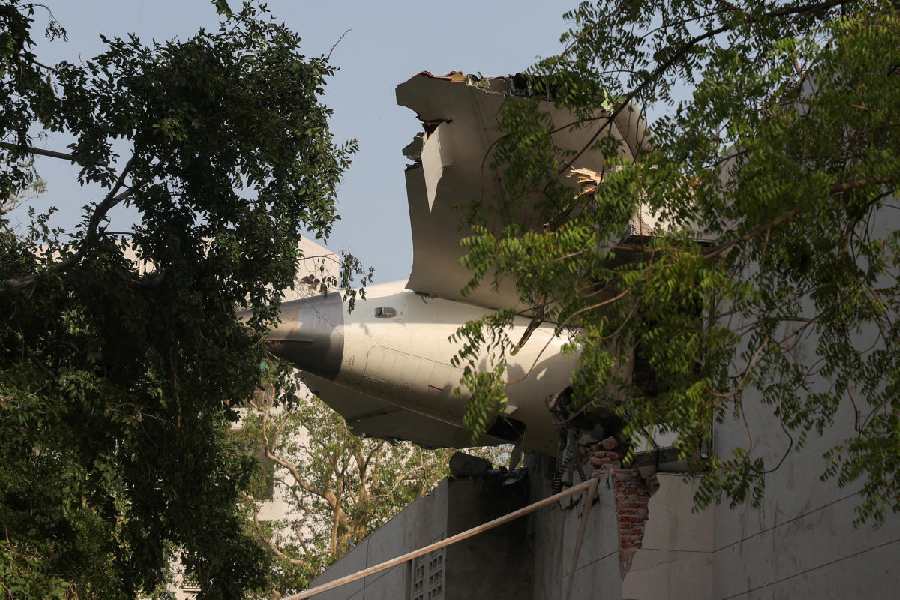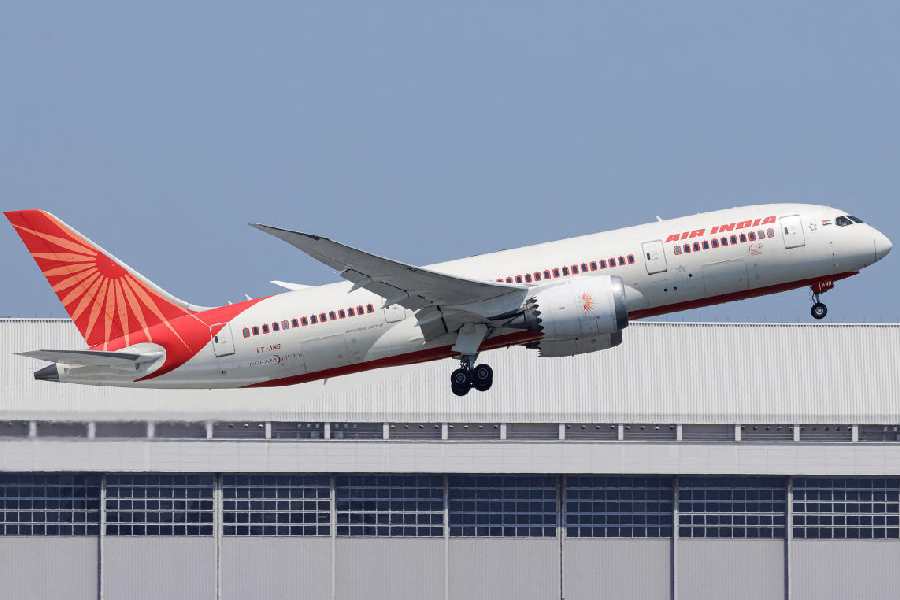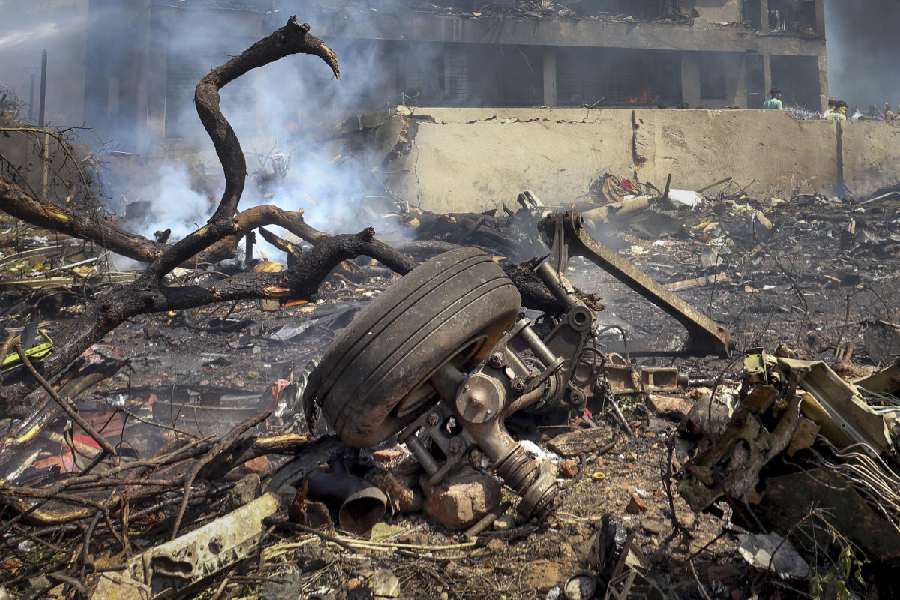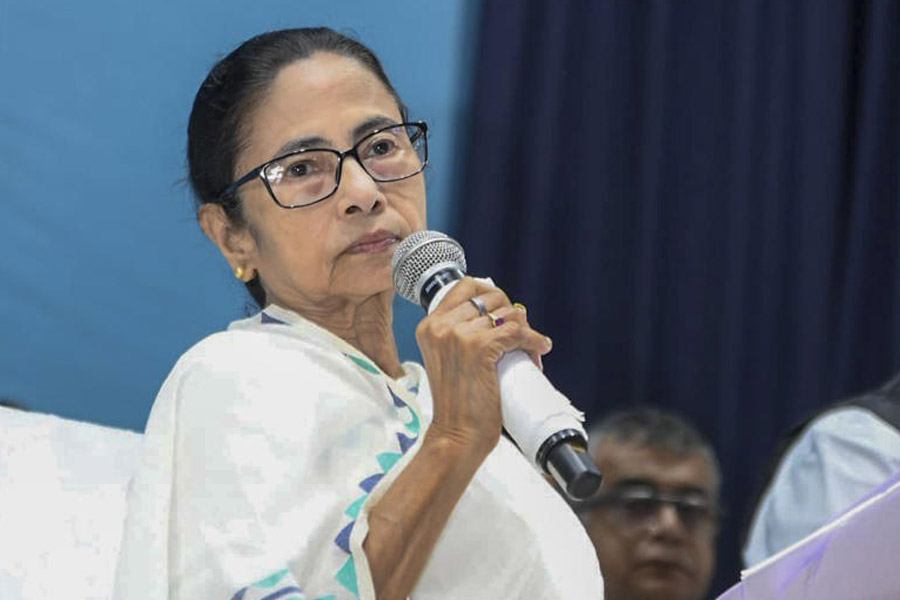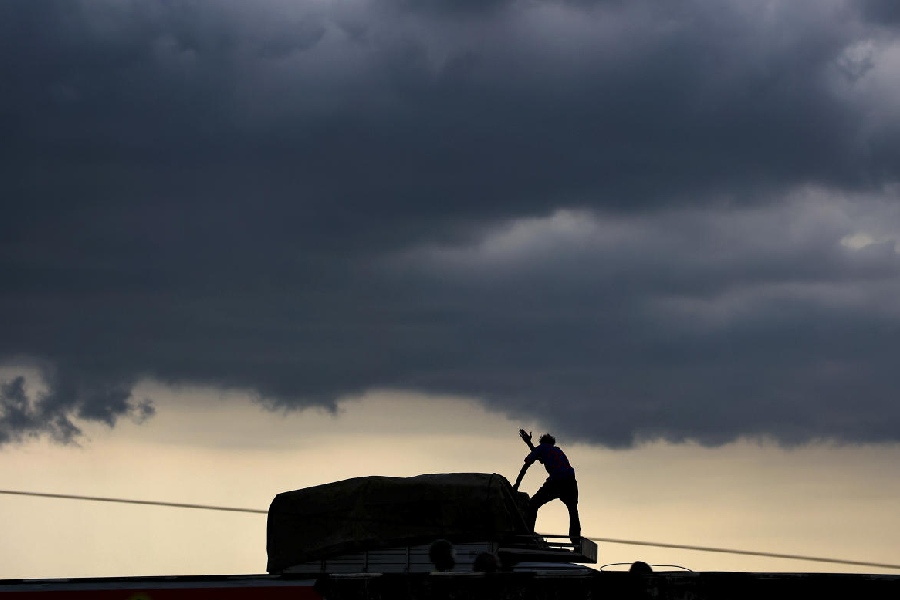 |
| Rappel on: Arun K. Roy (centre) with his fellow adventurers |
I didn’t think 61 was a good age to start anything energetic, so it was with some trepidation that I agreed to accompany old fellow collegians Kajal Basak and Pradip Roy on a trek to the Garhwal Himalayas. My only reassurance lay in the knowledge that they were experienced trekkers themselves.
But as a retired squadron leader, I took precautions, anyway. I got my doctor to list all the medicines I would need for my chronic diabetes, hypertension and backache and also some pills that I might need during a trek at such a high altitude. Since I am diabetic, I have to go on long walks and that routine has kept me more or less physically fit.
So, end-May this year, armed with my Nikon SLR, a walking stick and an assortment of medicines, I set off with the rest of the gang by road. We were a fairly mixed bunch. There was Kajal (45), his wife Madhuchhanda (39), daughters Sanchita (14) and Sagarika (11), Pradip (45) and another friend’s son, Shouvik (13). We were headed for Uttarkashi, on the banks of the river Bhagirathi, which was to be the base for our trek. The route we decided on was to take us from Barsu through Dyara Bugyal, Deokund, Siyari Dhar and Lamhu Dhar down across the river Asi Ganga and finally to Dodital via Majhi.
On the morning of May 31, with me feeling as awkward as Lalmohan Babu (but without the camel) in Sonar Kella, we left Uttarkashi for Barsu (1,830 metres) and then Barnala (2,800 metres). The climb was steep and tiring, especially for a novice like me. But I learnt little tricks such as using the toes while climbing and heels while descending and the importance of maintaining an even pace without getting out of breath.
We decided to stop for the night at Barnala. The next morning, as we came out of Barnala Bowl on to a slightly higher ground known as Barnala Top, we were greeted by a postcard-pretty view of a small lake and some snow-covered peaks. Soon after, we resumed our journey, climbing through the forests to reach Dyara Bugyal after three hours.
The most rewarding day of our trek was day three. Magnificent, spectacular, fantastic ? all these adjectives fall short of describing the panorama of blinding white peaks ? Srikant, Jeonil, Draupadi, Gangotri, Bhagirathi ? that unfolded gradually before our eyes. The spectacular view remained with us right through our climb to the end of Siyari Dhar.
By this time, I had already learnt to combat the shortage of water, a few aching bones and a stomach upset. Rather, I thought I deserved a pat on the back. But it did not take me long to realise that I was wrong.
On day four, we were passing through a forest which was dense, the incline very steep, the soil wet and loamy and, to top it all, we were unsure of the direction in which to descend. We were clueless when Mangal, our guide, decided to lead us down the precipitous slope with the help of his 100-metre-long rope which he had carried for this kind of eventuality. For me, my first rappelling experience took place under actual conditions. When one undergoes rapelling training, the conditions are simulated, but here there was no choice. Either you rappelled or became George of the Jungle.
After rappelling down 200 metres we reached a stream which led to the Asi Ganga river. After a short break, we climbed again to reach Majhi (3,000 metres) at about 4 pm and found a camping site of the forest department. I wanted to dance all night after that adventure, but decided against it.
The next day, we set forth for Dodital (3,007 metres) and its beautiful lake. We had tea at Agoda (2,250 metres) at Balbir Singh’s hotel. A black mountain dog adopted us and walked us right down to Sangamchatti (1,350 metres) showing us the way. We were told by the locals that the dog, named Herbie by an Englishman, provides this free escort service only to tourists but not to the locals.
The expedition taught me a lot. I’d been a bit low on confidence before it. Now I am back to being the old, or rather, young me.


